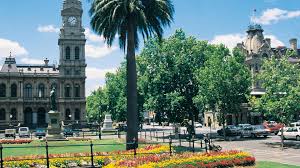New research shows that homes, and in fact whole communities, are not far from supplying their own cost-competitive energy to their homes and towns.
A report jointly conducted by Energy for the People and the Alternative Technology Association, says it could soon be financially viable for communities to use stand-alone power solutions and buy back their local electricity grid to operate their own energy supply infrastructure by 2020. It notes it could be an attractive option for new energy service companies that are moving into the market.
“The National Energy Market is in a state of profound transition, from a centrally planned and controlled market, to one where local generation, storage and control of power is common-place,” the report finds.
“How far this transition goes, and how quickly, are the only questions that remain unanswered. This research paper suggests the transition may be quick and dramatic a shift to cost-effective stand alone power solutions appears very plausible, by 2020.”
That is a lot quicker than was envisaged by recent reports such as the CSIRO Future Grid scenarios, but it takes into account falling solar prices (although these are expected to stabilise in coming years), plunging battery storage costs, and rising grid prices.
“Communities are considering building their own, community-owned power generation assets. In this time of profound change, a clear view of what our energy market will look like in five, ten and twenty years, is critical to have in mind,” the report says.
“An incremental transition, where new technologies are integrated within the incumbent energy system is possible. However a more dramatic transition, where new technologies shape an entirely new energy market, appears financially compelling – in the long-run, economic fundamentals will be hard to withstand.”
The report analysed clusters of 500 households in three Victorian centres – Bendigo, Werribee and suburban Melbourne. It noted that because of Victoria’s relatively poor solar resource (in comparison with the rest of the mainland) is represented something of a worst-case scenario for Australia.
Newer technologies such as solar power and energy storage have created a vastly different rationale for energy market design; they are factory built, modular, installation size can increased or decreased with minimal impact on their installed cost and they can be located close to where energy is consumer, with no impact on air quality or health.
“The research shows that with good planning there is a huge opportunity for people to save money and energy that is presently wasted on an archaic distribution system, and make their energy supply more reliable,” said Mount Alexander Sustainability Group (MASG) chair Marg Rasa
“It also means that communities will be able to buy back their local energy grid, and to invest directly in local energy generation and storage.”
 Cities such as Bendigo could find it viable to be off the grid as soon as today, according to the report. A plan where the community buys back the grid, delivered by a specialist energy service company, avoids a network upgrade cost of $2000 per home.
Cities such as Bendigo could find it viable to be off the grid as soon as today, according to the report. A plan where the community buys back the grid, delivered by a specialist energy service company, avoids a network upgrade cost of $2000 per home.
The research also found that isolated regional towns like those in Mount Alexander Shire are also likely to be excellent candidates for stand-alone power alternatives.
Individual homes in regional areas, with high winter and summer thermal loads, are likely to be viable before 2020 where communities can self-organise and realise cost-reductions on stand-alone power infrastructure. However, they are constrained by the size of PV systems required (8.2KW) due to household roof sizes.
“New housing developments are highlighted as a market where stand-alone power is likely to be cost effective, creating the potential for new housing developments to be energy self-sufficient precincts,” Rasa said.
Homes in greenfield developments are likely to be viable around 2020 with a significant step-change in stand-alone power infrastructure costs, or customers choosing to reduce the size of their home to save on construction costs and offset stand alone power infrastructure costs.
The report also found that reducing the size of a home by 9m2 (3.5% of the average new Victorian home) would be sufficient to make stand-along power infrastructure viable by 2020.
“MASG is already working on local and regional renewable energy options. The possibilities opened up by this research are an exciting step in bringing power back to power users,” Rasa said.
The full report can be found here.








